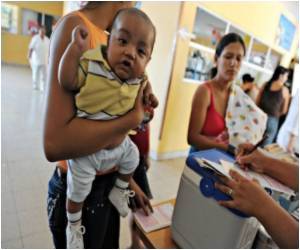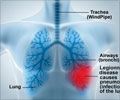Childhood pneumonia remains the leading killer of children under the age five which has claimed 1.3 million lives om 2011 alone.

Investments in preventing, treating, and protecting children against pneumonia have contributed to significant declines in child mortality over the last decade, but access to healthcare facilities and treatment remains out of reach for many children in the developing world, where 99 percent of deaths from pneumonia occur. According to the Global Coalition Against Child Pneumonia, country leaders and funders must prioritize efforts and investments in proven interventions, including access to vaccines, proper antibiotic treatment, and improved sanitation, as well as the promotion of practices such as exclusive breastfeeding, frequent hand washing, care seeking, and the use of clean cookstoves to reduce indoor air pollution. Several of these interventions also help address the second leading killer of children – diarrhea.
For pneumonia cases that do occur, antibiotics such as amoxicillin are one of the simplest and least expensive methods of treatment. However, antibiotics are administered to less than one third of children with suspected pneumonia, and only a tiny minority receives amoxicillin in the ideal form for small children: a tablet that dissolves in a very small amount of liquid or breast milk. According to the UN Commission on Life-saving Commodities for Women and Children, making amoxicillin available in a dissolvable tablet form to the children most at risk of dying from pneumonia would potentially save 1.56 million children over five years.
According to a Pneumonia Progress Report released today by the International Vaccine Access Center (IVAC) at Johns Hopkins, 75 percent of all childhood pneumonia deaths worldwide occur in just 15 countries, demonstrating the impact we can have with targeted efforts. The report also notes that none of these countries have reached the 90 percent coverage targets for key pneumonia interventions recommended in the Global Action Plan for the Prevention and Control of Pneumonia (GAPP).
GAPP, issued by the World Health Organization (WHO) and United Nations Children's Fund (UNICEF) in 2009, specified that child pneumonia deaths could be reduced by two-thirds if three child health interventions – breastfeeding, vaccination and case management including the provision of appropriate antibiotics – were scaled up to reach 90 percent of the world's children. Over the past three years, the GAVI Alliance has assisted over 20 countries to introduce the pneumococcal conjugate vaccine, which prevents the most common cause of childhood pneumonia. While progress is being made, currently only 7 of the 15 countries profiled in IVAC's report have vaccine coverage levels at or above 80 percent. Coverage of breastfeeding and access to antibiotics are similarly low in most countries.
Key to getting vaccines and treatments to the children who need them most are frontline health workers, who are the first and often only link to healthcare for many children. However, WHO estimates there is currently a shortage of at least one million frontline health workers, particularly in Africa and parts of Asia. Efforts such as Save the Children's Every Beat Matters campaign are bringing attention to this shortage to spur action.
Advertisement













